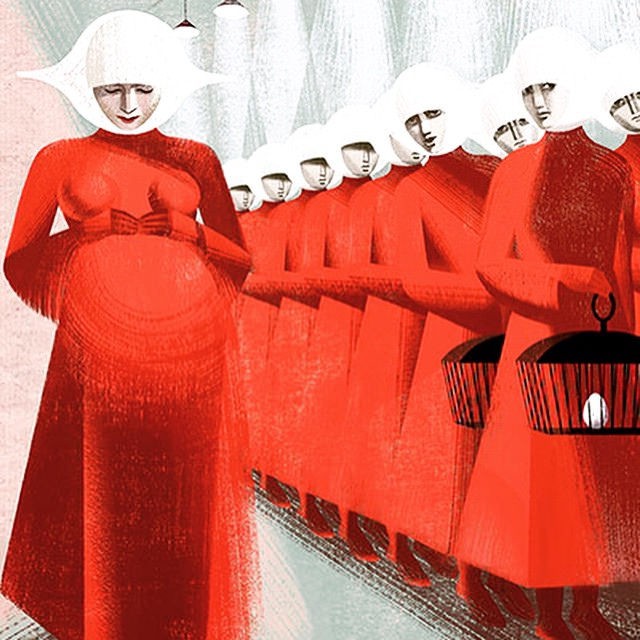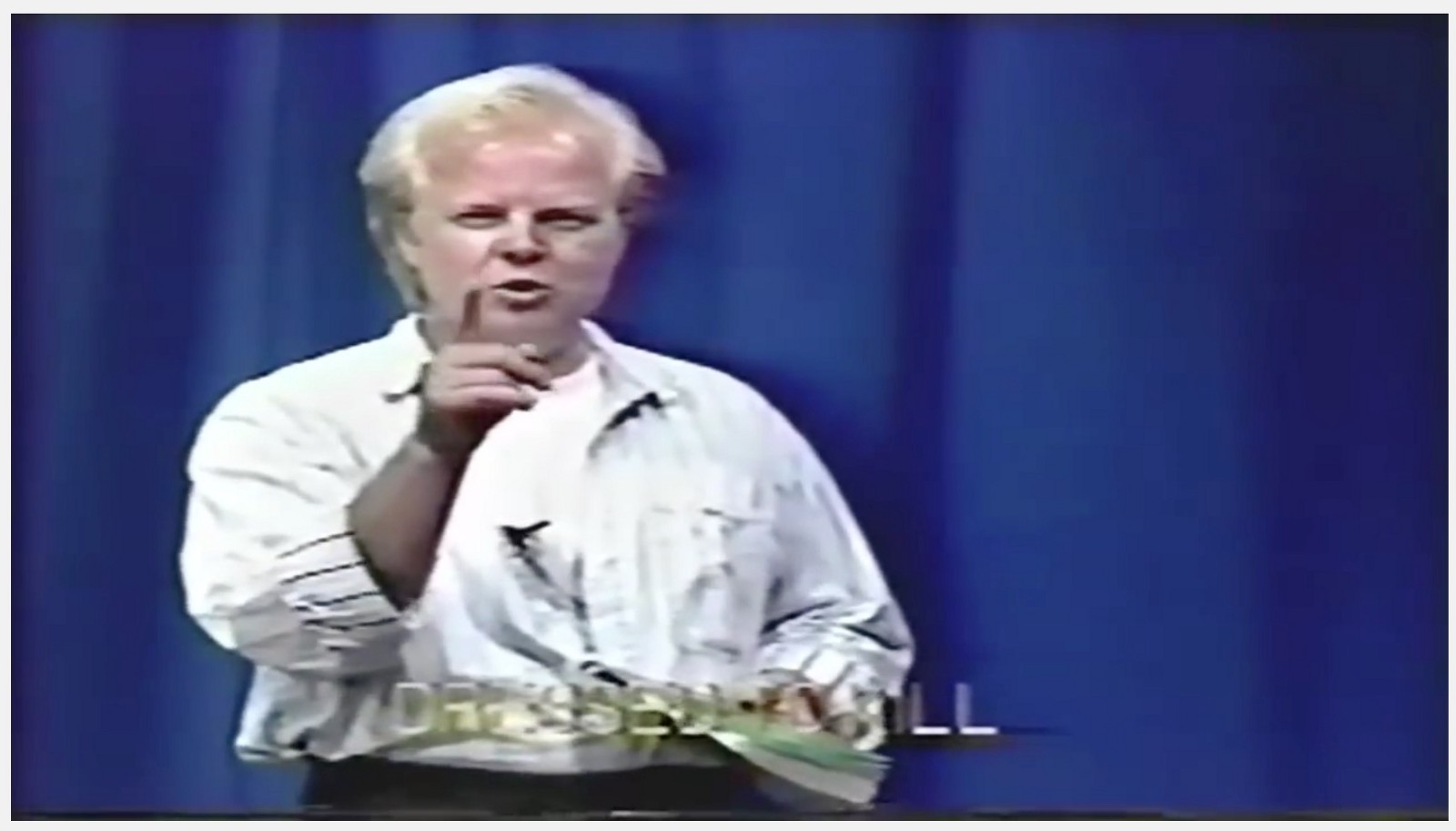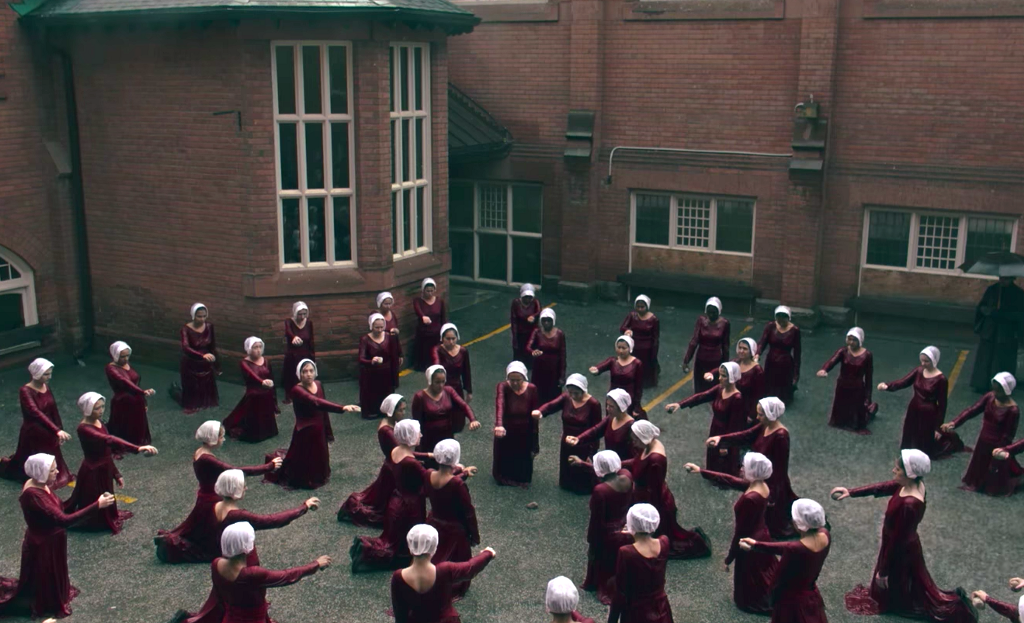Books & Culture
The Epilogue of ‘The Handmaid’s Tale’ Changes Everything You Thought You Knew About the Book
The oft-forgotten male-narrated ending that reframes Atwood’s classic novel

With the recent release of the Hulu original series The Handmaid’s Tale, Margaret Atwood’s 1984 novel by the same name has once again entered the public consciousness. And, at a time when legislators have voted to defund Planned Parenthood and our country has seen the election of a man accused of sexually assaulting no less than seventeen women, the dystopian story about an America in which women are gradually stripped of their rights rings eerily true. However, one of the most disturbing and often overlooked portions of the novel is the epilogue, which does not directly involve Offred, and is primarily narrated by a man.
Set in the distant future, The Handmaid’s Tale’s epilogue reveals that the main body of the novel is, in fact, a collection of tapes — Offred’s oral history of her time serving the Commander. The epilogue takes the form of a historian’s address at a prestigious university’s conference, as Professor Pieixoto, one of two men responsible for transcribing the cassette tapes into the document known as The Handmaid’s Tale, discusses the difficulties he met in attempting to verify the happenings recorded in the tapes. While the actual body of the novel is narrated by a woman, the novel ends with an analysis of these events presented by a man. Offred, the narrator of the novel, who has no identity other than the name of the man she works for, does not even get the final word in her own story.
Even the name “The Handmaid’s Tale,” as is revealed in the epilogue, was not chosen by Offred herself, but by the two male professors who discovered the tapes and transcribed them. Pieixoto himself describes the process of naming the transcribed document, saying that “all puns were intentional, particularly that having to do with the archaic vulgar signification of the word tail; that being, to some extent, the bone, as it were, of Gileadean society.” The two male researchers take full advantage of their ability to title the manuscript and bestow on it a cheeky name that alludes to and, by making a pun, mocks Offred’s sexual servitude. Thus, the entirety of Offred’s story is controlled by men; even the thoughts that she records are discovered, edited, and titled by men. She has no autonomy or authority over her own story.
The entirety of Offred’s story is controlled by men; even the thoughts that she records are discovered, edited, and titled by men.
Additionally, Pieixoto’s attempt to identify Offred by identifying the Commander she lives with not only reveals the erasure of women within Gileadean society, but also the way in which the men of Gilead have been glorified throughout history. Pieixoto does state that he tried to find the identity of Offred, but, since her original name is not provided in the manuscript and the other names in the manuscript such as “Luke” and “Moira” appear to be pseudonyms, he is unable to track her down. He offers two potential candidates to be Offred’s Commander, instead.
In discussing the identities of these two men, Pieixoto describes both of their contributions to Gileadean society, indicating that, though history has erased the women of Gilead, the men of Gilead have been remembered as heroes. One of the potential Commanders, Frederick R. Waterford, is credited with the design of the women’s uniforms, which Pieixoto says he borrowed from German POW camps in Canada during World War II. Pieixoto discusses Waterford’s role in the origins of some of Gilead’s other rituals, such as the Salvaging, and states that “there was little that was truly original about Gilead: its genius was synthesis.” Though not explicit moral praise of Gilead, the word ‘genius’ demonstrates a certain level of respect for the totalitarian regime, and, given what Pieixoto has just said about many of Gilead’s ideas coming from past societies, this demonstrates a dangerous apathy toward the plight of women in Gilead.
As is often the case in real life, in The Handmaid’s Tale, only privileged classes get to survive the course of history.
The erasure of oppressed groups is nothing new. Christopher Columbus, for example, has been hailed as discovering America despite the population of Native Americans already living there when he arrived, and whose population was later decimated by diseases brought over on English ships. But the fact that these men are regarded as important historical figures sharpens the pain of Offred’s narrative, and, frighteningly, feels like something that could happen in our own, modern-day America. Pieixoto does not discuss the identities of any female revolutionaries in his address, and he treats the entire female resistance with disregard, even mockery, referring to the Underground Femaleroad, one of the main escape routes for women trapped in Gilead, as “The Underground Frailroad,” playing off of the notion that women are the weaker sex.
That these men are regarded as important historical figures sharpens the pain of Offred’s narrative.
Moreover, Atwood herself has said that Gilead is rooted in actual history; in an essay in The New York Times, she writes, “The Republic of Gilead is built on a foundation of the 17th- century Puritan roots that have always lain beneath the America we thought we knew.” These Puritan roots look familiar to us, even today, and it’s part of what makes Gilead so horrifying. And, what’s more, just like in the novel, we have managed to ignore the warning signs and neglected to condemn the remainders of this Puritan bedrock. Pieixoto’s dismissal of Gilead as cultural relativism rather than an actual totalitarian regime is horrifying in part because it has happened in real life, and it’s not a stretch to imagine that it could happen again.
Perhaps even more disturbing than Offred’s total erasure is the blasé nature with which the scholars of the epilogue regard the events of the novel. Pieixoto remarks “we must be cautious about passing moral judgment upon the Gileadean. Surely we have learned by now that such judgments are of necessity culture-specific.” The professor listened to Offred’s description of the tortures that women were subjected to during her time, yet he is reluctant to judge the perpetrators of her suffering. Dr. Pieixoto, as a male scholar, is viewing these historical events from the distant perspective of privilege, and as a result, like many real-life scholars, he is unwilling to condemn something that would never have affected him personally, writing off the oppression of an entire gender as a matter of cultural misunderstanding.
Offred’s narration in clear contrast, makes clear that this is not the case. She depicts infertile women being subjected to indentured servitude and noncompliant women being tortured; the room in which she lives has had the chandelier removed to prevent her from committing suicide as her predecessor did — these are hallmarks of an oppressive regime, not a system of ideology. Through Pieixoto’s blasé reaction, Atwood makes it clear that to dismiss women’s rights as anything other than human rights is ignorant at best, and that to ignore violations of women’s rights in the name of cultural relativism is wrong.
The male scholars of the epilogue make little effort to critically examine the treatment of women under the Gilead regime.
A big part of the horror of The Handmaid’s Tale is that, despite the suffering that women endure, future society regards the treatment of Gilead’s women as a simple fact of history; something to be learned about rather than cautioned against. The male scholars of the epilogue make little effort to critically examine the treatment of women under the Gilead regime. “Offred records her story as best she can; then she hides it, trusting that it may be found later by someone who is free to understand it and share it,” Atwood writes in the Times piece. In the academics of the novel’s epilogue, Offred certainly finds her audience, but not the sympathetic one she might have hoped for.
In the future of the epilogue, women have clearly been restored to the public sphere, as Pieixoto is initially introduced in a speech by a woman. Gilead, at least on a global scale, is a regime that has an end, that has escape. However, the possibility of returning to a similar regime lurks just under the surface of Pieixoto’s address. If scholars are not willing to condemn the treatment of oppressed people, as happens in the epilogue of The Handmaid’s Tale, there is the possibility that history will repeat itself.








